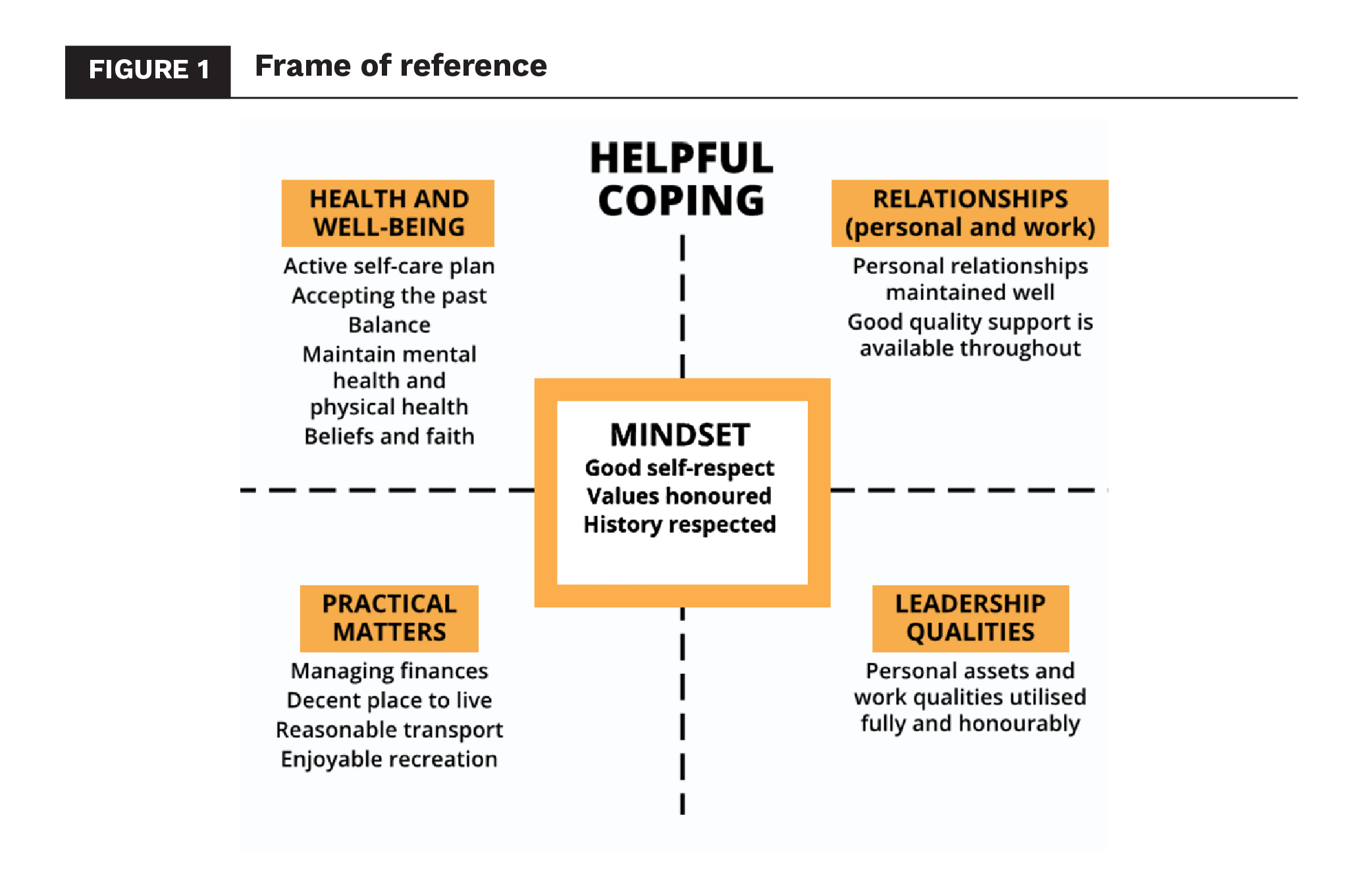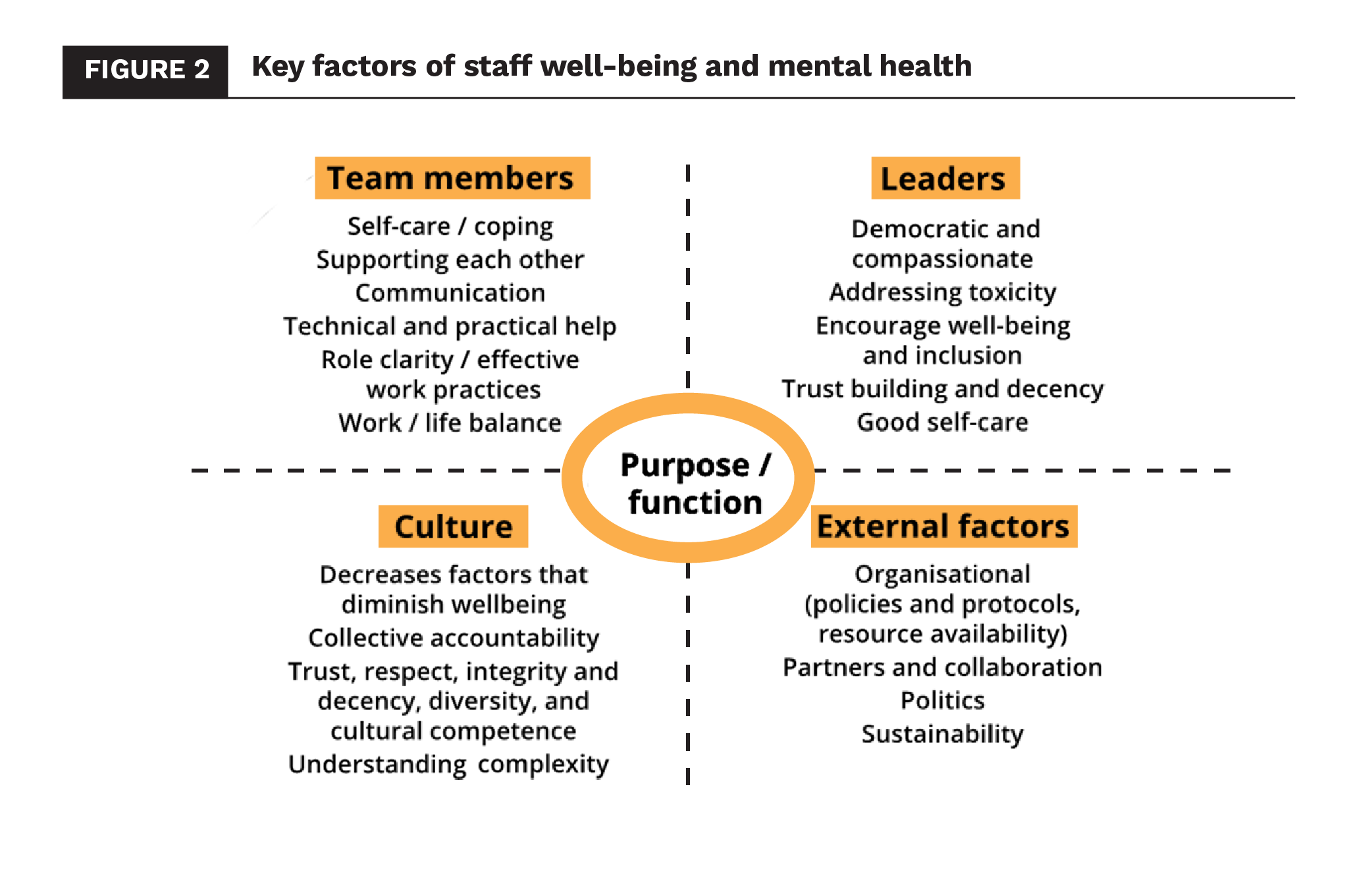By Anna Eliatamby
Mental health has a massive impact on our leadership, work, and life. It heavily influences how we lead and the people we lead. Here, we explore the reasons for the impact of health on leadership and ways of enhancing employee mental health by being a healthy leader.
First, we define what is a healthy leader and what is employee mental health.
Being a healthy leader
Means that you are taking care of both your physical health and mental health. You can cope with life and work, grounded and centred in your values and purpose. Your leadership style reflects your self-care and is inclusive, considerate, and mindful of other’s mental health and physical health. You work to create an organisation and culture that is decent and respectful for all regardless of their health status. Your impact increases because of your good health.
An individual’s frame of reference, which has different components, guides all this1. Your frame of reference centres on your mindset, and includes your health and well-being, the quality of your relationships, practical matters, and the full use of your leadership qualities.
You address both your helpful and unhelpful personal aspects and you continually reflect on your impact and learn.

Employee mental health
Positive mental health includes full psychological functioning, i.e., the ability and capacity to flourish, being able to cope with stressful situations, and a positive sense of well-being. It encompasses mood and outlook, drive and motivation, cognitions, social self, mind-body connections and adaptability and resilience2.
To boost employee mental health, leaders need to appreciate what is the likely status of staff mental health. Recent research notes the absolute importance of ensuring and facilitating staff mental health as we recover from the COVID pandemic and try to manage in the current global uncertainties – the economic situation, climate change, conflicts2,3.
Employee mental health is still not at pre-COVID levels. Stress levels are at a ‘historic high’ globally, and many are quiet quitting3. Over fifty percent of those surveyed expressed an intent to look for other work. And most said that being engaged in work was key to coping. Feeling involved and enthusiastic mattered three times more in reducing stress than where the office was.
Second, leaders need to understand that staff are not a homogeneous group. Their mental health and physical health will vary. There are essentially three groups: people who are physically and mentally healthy and at work, those with some mental health and physical health problems and at work, those whose health goes into crisis and need immediate help. Employees will shift from one group to another. There are generational and other differences that need to be considered, e.g. neurodiversity, intersectionality4.
There is a massive amount of data and reports proving that there is still too much toxicity in organisations5. Any healthy leader who wants to build employee mental health must address holistically any negativity that is present either in themselves or in the organisation. Toxicity adversely impacts well-being, mental health, and inclusion. It is also a top predictor of poor health6.
Geronimus (2018) (citing Emerald Snipes Garner) described the impact of toxicity as
“They pull out one piece at a time, at a time, and another piece and another piece until you sort of collapse. I thought that the Jenga metaphor was very apt because you start losing pieces of your health and well-being, but you still try to go on as long as you can.” 7.
Why a ‘healthy’ leader can boost mental health

Just being present with others has an immediate influence and this will vary and depend on each person’s health. Clearly, if you are healthy, then the chances of a positive impact are higher.
Moving beyond the influence of being present, there is also a duty of responsibility and care that comes with leadership. Through this and other mechanisms described below, leaders can and should enhance and enrich the mental health of people in an organisation. This includes the leaders themselves.
Positive mental health includes full psychological functioning, i.e., the ability and capacity to flourish, being able to cope with stressful situations, and a positive sense of well-being.
Boosting the mental health of employees often has a massive positive impact on productivity and effectiveness and the culture. Leaders can through their self-care, further promote well-being in others. Being seen to look after yourself provides the greatest motivation alongside the presence of other initiatives. These must be robust and based on what people need, not what the leader thinks is useful. Too often, many well-being and mental health programmes focus on skilling up an individual’s coping habits or increasing the understanding of managers on mental health issues. But these have limited impact. Usually, there is an uptake of about 23% on most well-being programmes even though 87% of those surveyed had access to these initiatives.8.
A healthy leader will know when to advise and when to consult on how to create mental health initiatives. Their confident sense of themselves will lead them to ask employees about their needs regarding preventative interventions, such as learning about managing uncertainty, life coping skills, understanding mental health, and seeking specialist help confidentially. They ask and don’t instruct.
They also understand the risk of creating a stand-alone initiative that isn’t supported by other parts of the organisation. Also needed are positive policies and procedures that are used, and a place for staff to seek justice (both senior and junior). Then all collectively build a culture that promotes self-care, confidence, and collaboration and one that addresses any unhelpful aspects openly.
Part of the work of a healthy leader is to encourage growth in those whom they lead and manage. Doing this with consideration will automatically make more junior people feel engaged and part of a greater whole – which is great for their psychological status. Employee self-efficacy, adaptability, and feelings of belonging are ‘top predictors of good health.’ 6.
Much of this depends also on the overall leadership style adopted by the person. Beyond the actual skills, such as emotional intelligence, what matters most is what the person does with their role.9 A healthy leader should, ideally, know when to be democratic, decent, and collaborative and when to be decisive. They can flex. They then become role models for others to follow. And everyone protects their mental health.
Researchers have found that a transformational leadership style positively impacts the mental health of personnel, while a destructive style has the opposite effect. The latter not only leads to negative mental health symptoms such as burnout and increased stress but also reduces the chance of positive mental health outcomes.10
Also, resorting to toxic behaviours as a leader can lead to a decrease in that person’s mental health and well-being. And large amounts of these behaviours are detrimental to all concerned.
Leaders have an impact and a responsibility for culture. Each person leaves their mark. And this is most noticeable whenever there is a changeover of leadership. Thus, a wholesome leader can use this to build a culture of safety, decency, and care for each other while making sure that the work is done. They will show this in their everyday behaviour and, tacitly and overtly encourage others to do the same. People will flourish in such atmospheres, especially if the leader is someone who leads with humility and is not a person who must be centre stage all the time.

How a healthy leader can boost mental health
By taking responsibility for their own self-care
For leaders, looking after their own mental and physical health should be their priority. This includes being honest about their health status and working to maintain it through good self-care, seeking professional help as needed. And, if possible, being open about their mental health needs. They should ensure that they are respecting themselves and living (as much as possible) according to their values and purpose while acknowledging that compromise is inevitable.
They accept the role of their past (known and unknown) and find a balance in living. A healthy leader will do their best to have work and life relationships that are supportive, not damaging. In practical matters, they are realistic and make sure that these do not detract from their health, e.g. having an overly long commute.
They fully know their personal assets and work qualities. And work actively to build on them and address their blocks and barriers. They work with others and do not dominate. They are inclusive and collaborative.
Living like this will provide a solid and flexible centre from which they can, with strength, fulfil their responsibility as a leader.
The mental health of employees
Positive mental health includes full psychological functioning, i.e., the ability and capacity to flourish, being able to cope with stressful situations, and a positive sense of well-being.
This is best enhanced collaboratively. Ask people to self-analyse their current operating environment in terms of well-being and mental health. What is working and what needs adapting or adding to? This is, by far, the most effective approach rather than implanting a programme from elsewhere which is like providing people with a larder and recipes but failing to ask if they are hungry and what their food preferences are.
This diagram highlights the key factors that contribute to staff well-being and mental health.1 Show it to staff and ask them to assess the current team or organisation against each one.
Employee mental health efforts and addressing inclusion and toxicity are interconnected. Negativity is used to prevent inclusion and is aimed at having a negative impact on well-being. Unless we investigate and address all three simultaneously, any intervention will have a limited impact.1
Here are some key areas to look at and address.1 Where would the team locate themselves on these continua? Where would you locate the team?
By finding out what is working and what needs improvement, we can enrich employee mental health by building a suite of interventions with employees.
The interventions are usually those that are preventative: building psychological coping strategies, encouraging the use of self-care plans, and enhancing self-respect and confidence. The administrative infrastructure of policies and procedures needs to be double-checked so that they are supportive and used with honour. Vehicles for staff to be heard should be in place, such as an internal justice system, staff representatives, and support networks for sharing expertise on well-being. All initiatives that are selected must be evidence-based and valid.

Managers need to learn to recognise mental health issues in the early stages and then know how to work with the person to access specialist help. Or have time away and then return to work with support. Checks also need to be made to ensure that there is fairness in salaries, access to privileges, etc.
What matters most is the attitude and openness of the leader and employees towards mental health. And to look after themselves. Something we often ignore.
Overall, we need a holistic approach, far beyond most current well-being programmes. Otherwise, we are at risk of just trying to ‘fix’ the person.

Mental health should be a basic right in business. A healthy leader can have a much greater impact on employees and their own self. All this should be an automatic cornerstone of leadership and how organisations treat employees’ mental health. But it is not, unfortunately. The leader’s impact will still be significant, even if they
only accomplish 10% of the agenda.




























![“Does Everyone Hear Me OK?”: How to Lead Virtual Teams Effectively iStock-1438575049 (1) [Converted]](https://www.europeanbusinessreview.com/wp-content/uploads/2024/11/iStock-1438575049-1-Converted-100x70.jpg)





